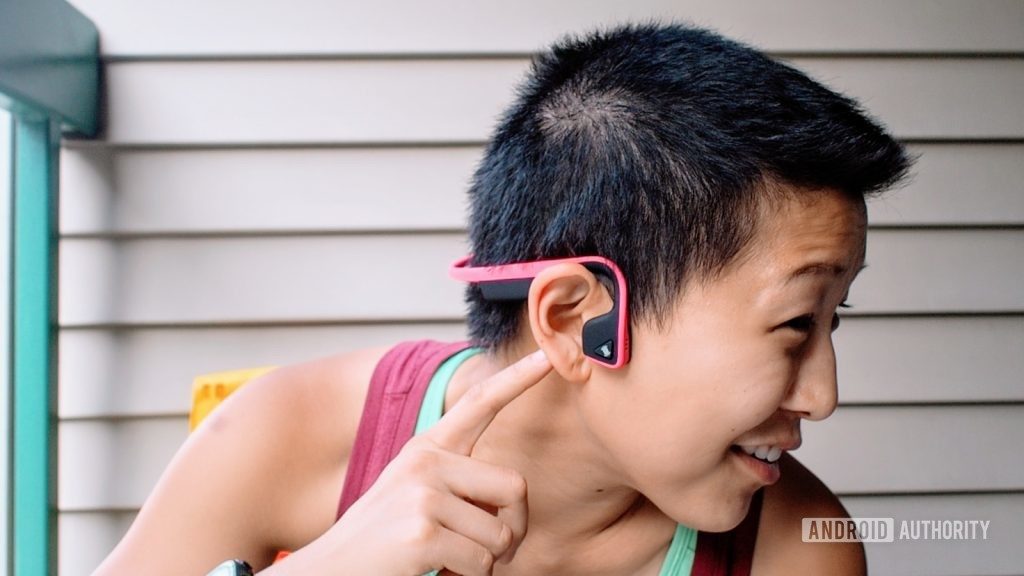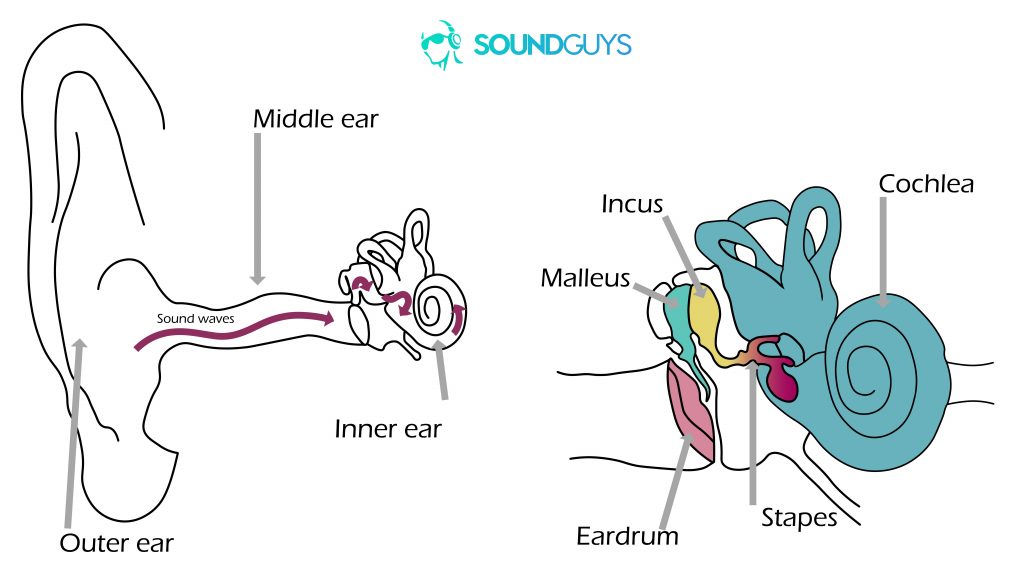

True wireless earphones have stolen the wireless audio spotlight these past few years, but that's not the only wireless technology worth eyeing. Bone conduction headphones fill a particular niche, and are exceptional for outdoor athletes and certain segments of the hearing impaired community. We're diving into all things wireless bone conduction headphones.
What are bone conduction headphones?
Bone conduction headphones are, well, headphones that rest right atop the listener's cheekbones. Rather than cueing the eardrum while sound waves travel through the air, bone conduction headsets send vibrations through the jawbone, bypassing the middle ear. The technology has its roots in hearing aids, and dates back to the 1920s, when Hugo Gernsback created the osophone — a bone conduction hearing aid. Nowadays, bone conduction audio has expanded beyond the world of health and medicine, and serves as a great tool for outdoor athletes. Since the headset frees up the ears, listeners are left constantly aware of their surroundings, which is paramount when running outside or hiking.
How do bone conduction headphones work?


Bone conduction headphones transmit sound waves through the listener's skull by constantly vibrating bone. More specifically sound is conducted through the skull right to the cochlea, avoiding the eardrum, malleus, incus, and stapes. The cochlea then moves microscopic hairs (stereocilia) within the Corti. This flowing movement initiates a string of chemical reactions that causes neurotransmitters to stimulate the auditory nerve. Once an impulse is fired off from the auditory nerve, it travels to the brain which interprets this information as sound.
This process also explains why your voice sounds lower to you than it does to others. Bone is better at transmitting low-frequency sounds than high-frequency sounds, which is why we're often surprised by how high-pitched our voices sound when played back as a recording.
Bone conduction differs from standard earbuds and headphones because the former inserts directly into the ear canal, and the latter uses padded ear cups that sit on or around the ear. In both instances, the eardrum and other mechanics are engaged, which works for most people. However, bone conduction headphones are a great option for anyone who suffers from hearing loss.
What are the best bone conduction headphones?
If you've searched the internet for a pair of Bluetooth bone conduction headphones, you're likely already familiar with the company AfterShokz. After all, it controls a large segment of the bone conduction earphones market. Our sister site SoundGuys has an in-depth list of the best bone conduction headphones available, but here's our quick rundown of the top three.
AfterShokz Aeropex


The Aeropex is AfterShokz' flagship headset and is the most durable of the three, given its IP67 rating that denotes both dust and water-resistance. You can completely submerge the Aeropex bone conduction headphones up to one-meter depths for 30 minutes at a time. These aren't explicitly swimming headphones though as they lack onboard storage; still, it's a good protective feature in case you drop them into the lake.
An integrated microphone can be used when accepting hands-free calls and battery life is on-par for wireless earphones: eight hours of constant playback. You can also access Google assistant and control playback with the multifunction button. It uses Bluetooth 5.0 firmware and costs $125 USD, making it the most expensive of the bunch.
AfterShokz Air


This sub-$100 workout headset is slimmer than the rest and includes reflective strips that keep listeners visible during nighttime strolls or jogs. The AfterShokz Air battery life is rated at six hours, which isn't great but should get you through a week of working out. Another downgrade from teh Aeropex: the Air uses Bluetooth 4.2 firmware, which could explain the relative dip in battery life. Embedded microphones are good for fielding calls. It's only IP55-rated though, so don't drop it in your local pool.
AfterShokz Titanium
The AfterShokz Titanium was my first foray into the world of Bluetooth bone conduction headphones, and is a great headset for anyone unsure of the technology. It's one of the more affordable options available and is IP55-rated, uses Bluetooth 4.1, and has a six-hour battery life. Nothing about this headset will blow you away, and if you're able, we recommend going with either of the other AfterShokz models for they have more reliable connection strength than the Titanium. For more great deals on headphones check out our coverage here.
Other frequently asked questions
Q: Are bone conduction headphones safe?
A: Yes, bone conduction headphones are perfectly safe and arguably safer than traditional in-ear earphones because nothing is lodged in your ear canal. This means you don't have to worry about trapping a silicone sleeve in your ear or causing an ear infection. They're also safe for running outside as they allow you to remain fully aware of your surroundings; of course, you still need to listen at a safe volume so your environment is clearly audible to you.
Q: Can bone conduction headphones cause tinnitus
A: Yes, bone conduction headphones, like all headsets, can cause tinnitus even though they bypass the eardrum. There are different kinds of hearing loss that affect different mechanisms of the ear, the most common of which is Sensorineural Hearing Loss (SNHL). A consequence of SNHL is the inability to perceive high-frequency sounds due to damage to the stereocilia. Again, these hairs are within the inner ear and rest along nerve pathways. They can still damaged by constant stimulation or extremely loud sounds.
Q: Can bone conduction headphones cause headaches?
A: Unfortunately, any headset can cause headaches and vibration headphones are no exception. Our temples are sensitive to pressure, which could make wearing a bone conduction headset difficult and uncomfortable. All it takes is a light amount of pressure for an extended period of time to cause a headache from these headsets. What works for me may not work for you, but generally speaking, you're unlikely to experience headaches with bone conduction earphones at a higher rate than you would from on-ear and over-ear headphones.
Q: Can you wear bone conduction headphones with glasses?
A: Yes, I'm a bespectacled listener and was able to wear a Bluetooth bone conduction headset without putting in contacts. I wasn't nearly as comfortable wearing the wireless bone conduction headphones with my glasses as I was without my glasses, but it worked without hindering the technology.
Next: Best workout earbuds
from Android Authority https://ift.tt/2A7kYsQ
via IFTTT
No comments:
Post a Comment